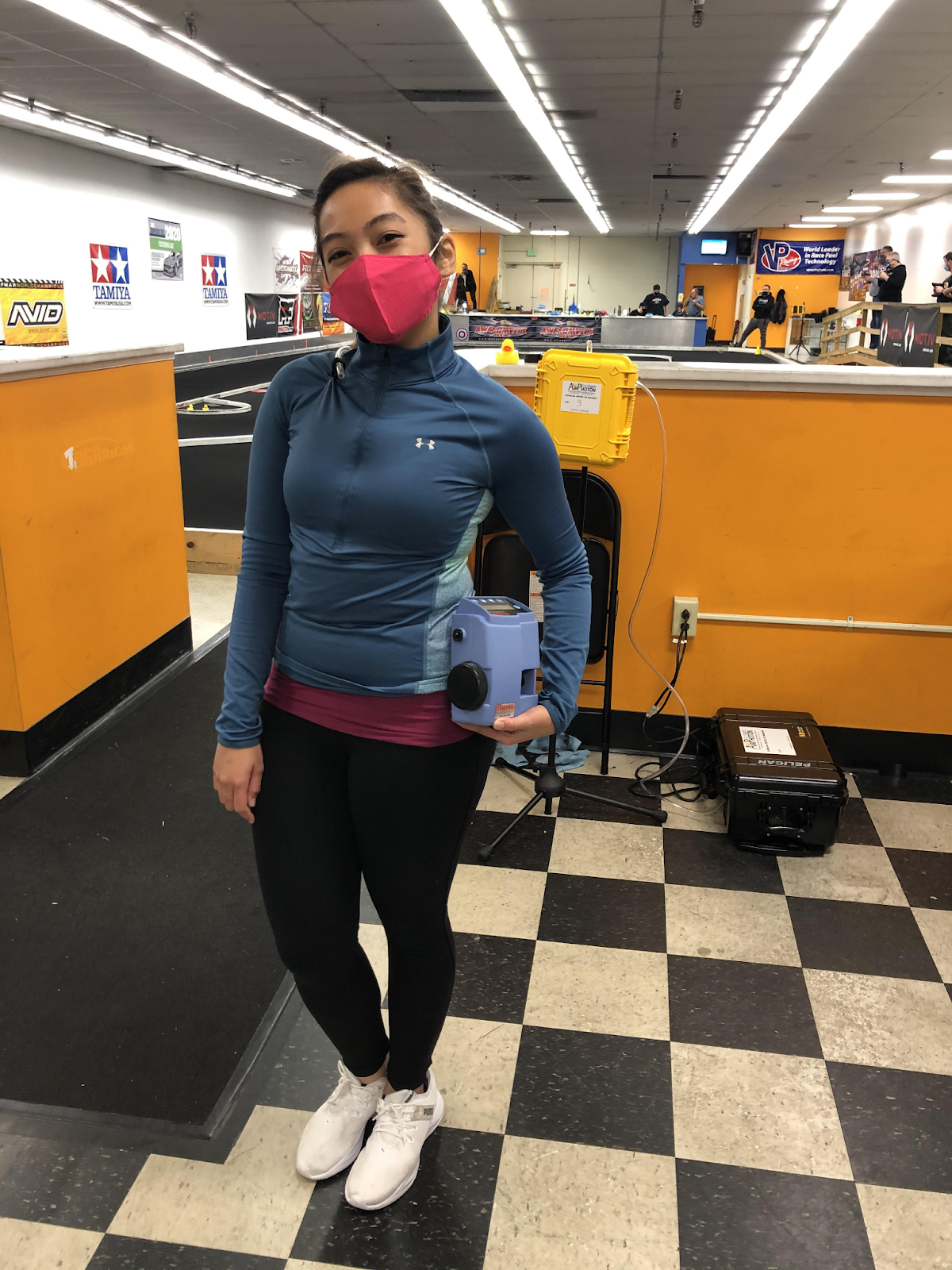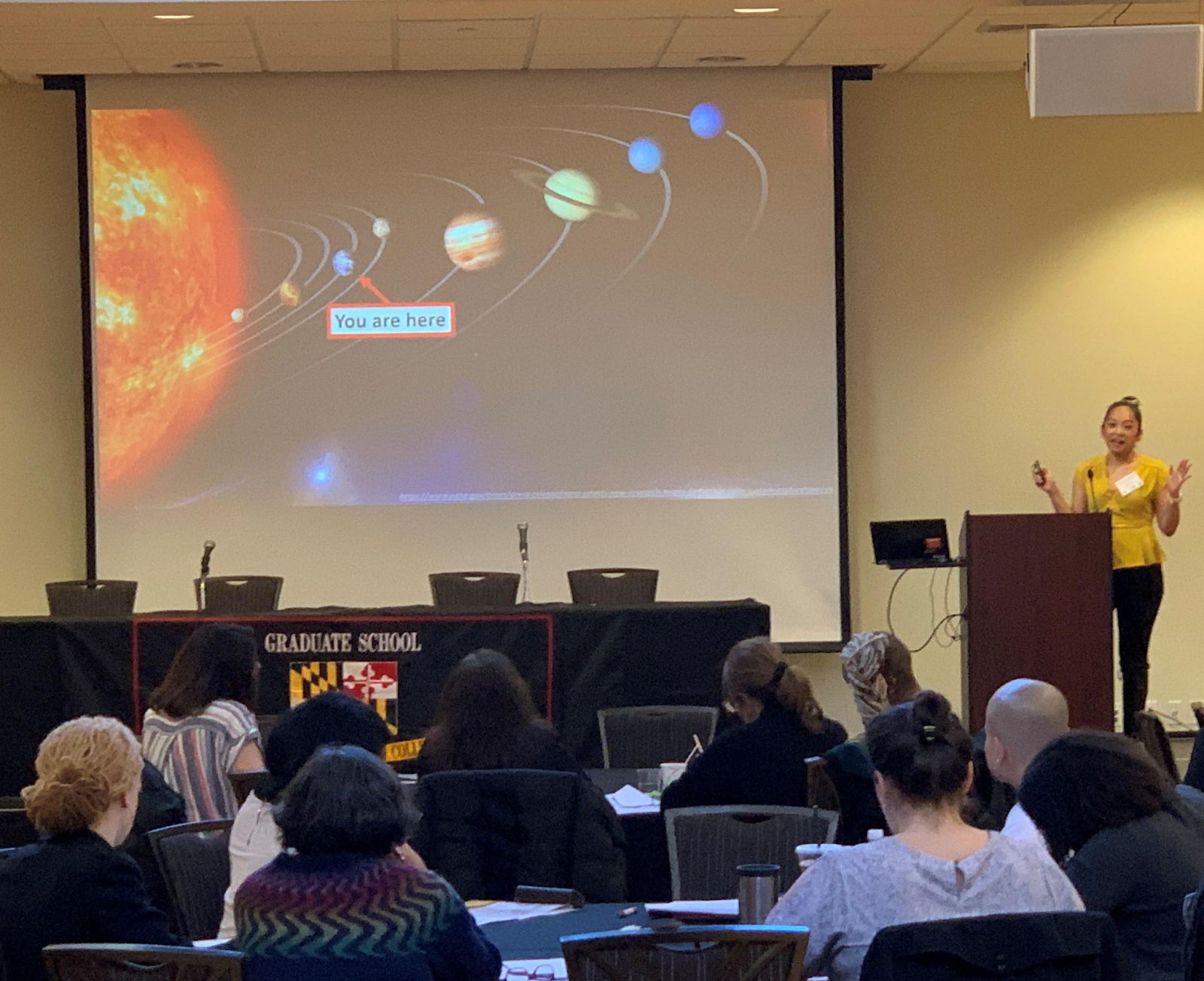Patricia Razafindrambinina: Researching aerosols to advance our understanding of climate system

Patricia Razafindrambinina is our intern working with the Ozone and Water Vapor Division and Global Radiation and Aerosols Division at Global Monitoring Laboratory in summer 2021. She earned her Bachelor of Science degree in Biochemistry from California State University - Fullerton and is now a Ph.D. student in Chemistry at the University of Maryland. She is also an NSF Graduate Research Fellow studying the effects of aerosol particles on the climate.
Her internship focuses on identifying correlations of ozone anomalies with air masses that were impacted by biomass burning from August to October 2020. High tropospheric ozone can trigger health problems and act as a greenhouse gas. The analysis will help identify the pathways for the enhanced ozone and evaluate the impacts of the fires on the ozone anomalies.
Our conversation follows.
-
When did you become interested in climate science, or more specifically atmospheric aerosols?
When I was young, climate change was never talked about in Grade school, but we did experience it. In Indonesia, we have wet and dry seasons. Living in an agricultural region, many of us relied on an accurate weather forecast for a living, but the weather was very unreliable. I also noticed that flooding has become more frequent during my middle school and high school.
When I went to college in California, I wasn’t thinking about climate science at all. I was a biochemistry major. Dr. Paula Hudson at California State University - Fullerton led me into the world of atmospheric aerosols. Soon understanding the importance and impact of this research in relation to climate, I decided to pursue a career in this field.

-
In Fall 2017, you worked as the Dolphus E. Milligan Fellow at the National Institute of Standards and Technology to research the regional climatic effects of mineral dust in America’s agricultural regions. What did you learn from that experience?
At the National Institute of Standards and Technology, I studied dirt in the air, particularly the dust kicked up by farming activities, how they are transported, and how they impact the climate. Dust is very reflective and it could have a cooling impact on the atmosphere. Understanding their distribution can be important when evaluating their impact on climate.
When I started the project, I was very new to the field and didn't know anything about the instruments. I had to jump right in and quickly learn new things. What I learned from this experience is that I just had to come in and be ready to take on challenges.
-
As a Ph.D. student at the University of Maryland, you focus on studying the water uptake of atmospheric sugars that are often byproducts of biomass burning. Could you explain a bit more about what you learn thus far about your research?
For my Ph.D. I have two main projects. I study how atmospheric sugar and monoterpene interact with water to form droplets. Atmospheric sugars come from burning and breaking down plant-made starch. Monoterpene is a natural tree part with a pine smell. They are similar in that they both become viscous when combined with water and thus the droplet forming process could be complicated especially with the presence of other chemicals. In the lab, I test how their water uptake properties change when mixing with salt, which is easy to uptake water, and how these properties change over time. These projects would provide insight into the cloud formation process related to these particles.
-
How do you see your research on atmospheric aerosols could potentially lead to a better understanding of climate change?
Climate change is a topic with lots of puzzle pieces - you need to reduce uncertainties to get a good interpretation. We still have a lot more to know about how aerosols are contributing to climate change, how they distribute, how they are transported, how they interact chemically in the atmosphere, and in the big picture, what they are doing to the whole climate system? Answering these questions will make us closer to the full picture that we are hoping to see.
-
How did you hear about the William M. Lapenta Student Internship Program? What do you look forward to most during your internship?
I saw the opportunity on Twitter. My friend and I were both interested in interning at NOAA and I looked up “NOAA Internship” on Twitter. This opportunity jumped out and I just applied.
I want to know how GML does research. Most of my previous work focused on lab experience, while this internship focuses on data analysis and computation. I hope to learn more about how that works.
-
You have lots of experience working on science communications and outreach and even thinking of starting your own on-profit online support center for STEM students. What motivates you to get involved in these efforts?
I want to make science and research accessible to everyone, not just having publications. To me, availability is not accessibility. For example, most research today is in English, but not everyone in the world understands English. Even though the research is available, it is not accessible to non-English speaking crowds. People need to understand it to be able to trust it. Building understanding is building trust and you need trust to build actions. I want to present science in the right way so that people can understand it and break down the perception of “Science is not my thing”.

-
Where do you see yourself going after this internship?
I still need to finish my Ph.D. after this internship, but I do want to build connections with people at NOAA. After my Ph.D., I am interested in getting a postdoc or entry-level science position. It is always my goal to use all the science I learned. Eventually, I would like to work as a science policy analyst helping to translate science into policy.
-
Advice you would like to give for future applicants?
You are not going to get an opportunity if you don’t apply! Never select yourself out before trying.
